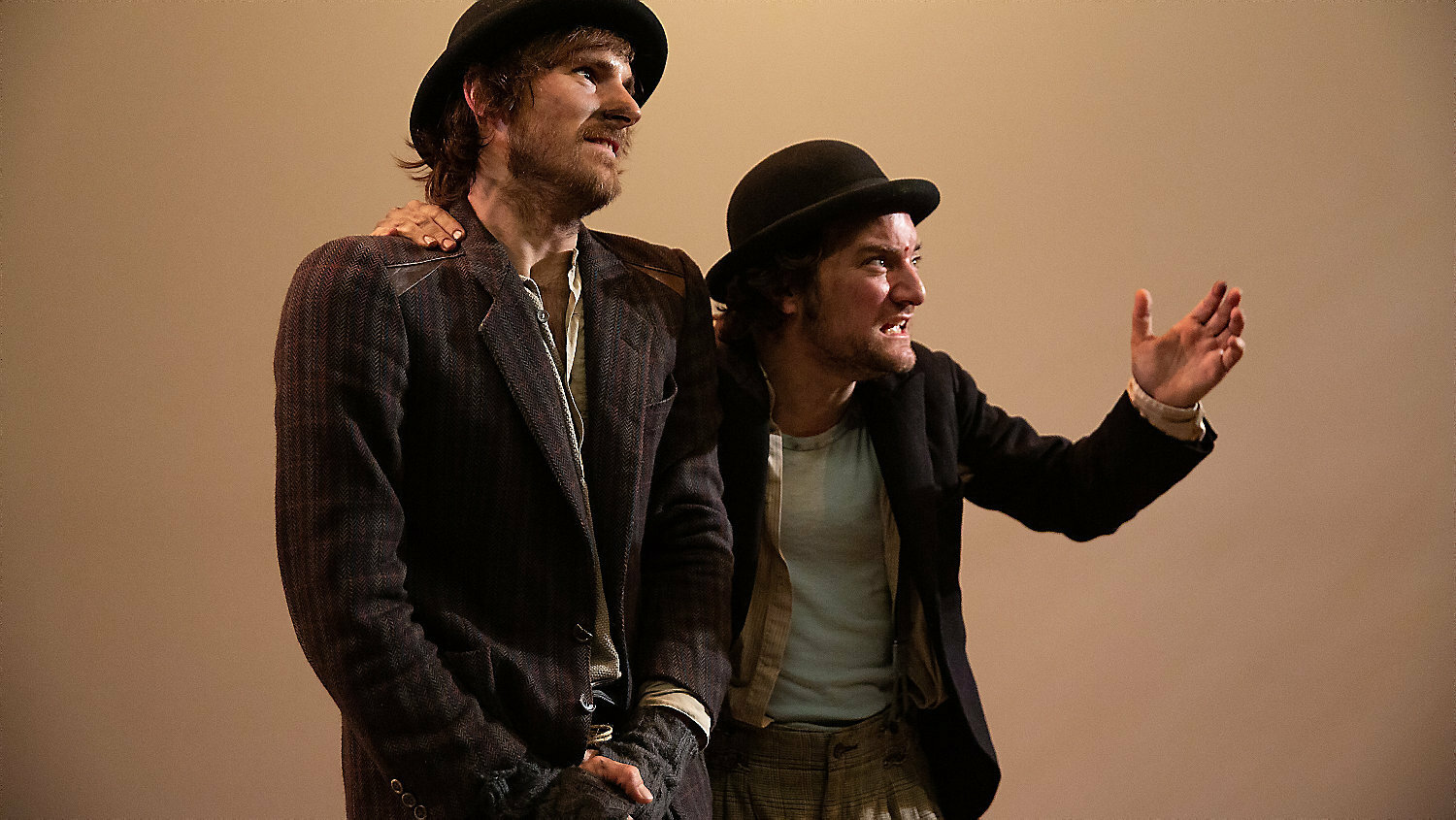JCJ Cinema, teatre, musicals, dansa | Teatre, Cinema, Dansa
Infantesa. Adolescència. Adult1. Adult2. Adult3.
Infantesa
Programes de reestrena a cinemes de barri. Roxy a Pl.Lesseps. Delicias a Travessera de Gràcia. La Salle a la plaça del nord.
Dos films amb les notícies del Nodo franquista a la mitja part. La mare ens deixava veure dues películes i a vegades ens reenganxàvem.
Sèries B, el Tarzan de Jonny Weissmuller, ciència ficció (vaig somiar algunes setmanes les formigues gegants que empaitaven la gent dins de túnels).
mary poppins
jungle book
Kubrick 2001 Una Odissea a l’Espai, l’estació espacial girant al sol del Danubi blau (en vaig demanar el disc als pares).
La leyenda de la ciudad sin nombre, de la qual vam comprar el disc i jo anava per casa cantant “women and whisky night and day”.
Adolescència
Començo a anar-hi pel meu compte. La Salla, Verdi, cinemes d’Estrena. Evasió o modern. un matí a l’Alexandra on vam veure To be or not to be de Lubitsch. Al Verdi amb en Josep Ribas a veure “Las petroleras”. La gran Vadrouille amb Bourvil i Louis de Funes (tea for two). Pelis progres a vegades avorrides, Teorema.
Arriba la televisió a casa BN. La Clave, sèries Dallas, Magnum.
Adult1
Al cinema, films que han acabat essent clàssics: Indiana Jones, Star Wars, Greenaway, Blade Runner. Matrix.
TV en color i comandament. Diverses cadenes i zapping. El 1983 comença TV3 (8 anys després de la mort del dictador). Més endavant parabòlica a la teulada per veure TV per satèl·lit. Sèries, Malu, Luz de Luna. Reproductor de vídeo, cintes VHS, lloguer al videoclub de Castellar.
1988
“Una habitación con vistas” (A Room with a view). “Ojos negros” (Nikita Mikhalkov sobre relats de Txèkhov) i “Something Wild”).
1989
ET, “Asesinato en Beverly Hills”, “Quién engañó a Roger Rabbit”, “Mujeres al borde de un ataque de nervios”, “Un pez llamado Wanda”. Tot sol, Peter Greenaway, “Drowning by numbers“, “The belly of an Architect” [Vaig descobrir Boullée], “Quién engañó a Roger Rabbit?”, “Ninotchka” de Ernst Lubitsch. “La mujer Pantera” de J. Tourneur, “Peligrosamente Juntos” amb Redford. “Depredador”. “After hours” de Scorcese. Tron. Gilda. Wall Street. “La Jungla de Cristal” (Die Hard). Fred Astaire, “La casa de Carroll street” amb la Kelly McGillis. “Arma Letal”. Point Blank. Accidental Tourist. Una amour de Swan de Volker von Schondorff. “Cazafantasmas II”. “Tres solteros y un bebé” en versió americana [descobria “Come softly to me”].
1990
“Les liaisons dangereuses”, “La vida privada de Sherlock Holmes”, “Arma letal 2”, “Hellraiser II”.
Sèries “Murphy Brown”, “Enredo” SOAP, o “Cheers”.
1991
Monalisa, el Club de los Poetas Muertos, Cyrano i Bagdad Cafe. Sèrie Twin Peaks.
1992
“Delicatessen” i amb les nenes hem vist “Fantasia”, “La Sirenita”, “3 solteros y una dama”.
1993
Tous les matins du monde, El sol del membrillo. TV: Ghost, Batman vuelve, Driving Miss Daisy, Análisis final, El Oso, Stormy Wheather (les nenes demanen “els nens que ballen”), Tomates verdes fritos, Cape Fear, Sin Perdón, Sex lies & videotapes.
Sèries: Un doctor en Alaska.
1994
The Piano. Festival de cine a Sitges amb Pulp Fiction i Troma.
1995
Bird (Charlie Parker), Jurassik Park, Thelma i Louise, Atrapado en el tiempo, La familia Adams, Cuatro bodas y un funeral, Regreso a Howards End, Los Aristogatos, Cariño he encogido a los niños, Stargate, Tierras de Penumbra, El fugitivo, Lunas de Hiel.
Sèries: Estació d’enllaç, Lois i Clark.
1996
Mrs. Doubtfire, Regreso a Howards End, A Room with a View, Tap Dancing, A Cabin in the Sky (Petunia), The Mask. James Bond Goldeneye, Babe el cerdito valiente. (L’única peli que m’ha fet plorar!).
Sèries: Médico de Familia, Fort Boyard, Nissaga de poder, Estació d’enllaç, Northern eXposure, Rumbo al Sur
1997
Vacances a Roma Audrey Hepburn, Cosas que nunca te dije Isabel Coixet, Nell Jodie Foster, 101 Dálmatas, Mision imposible, La red, La roca, Independance day, Speed, El quinto elemento, Men in black.
1998
Cinema: El demà no mor mai de James Bond, Titànic, Blues Brothers amb ball afegit. I un munt de vídeos com Juràssic Park i el Mundo Perdido, La flor de mi secreto amb Marisa Paredes, French Kiss, la ruta maya, Bienvenido Mr Chance, Mentiroso compulsivo. Mintras dormías, Seven, Didier mi fiel Amigo, els viatges de Gulliver, Contact, Full Monty, Fotografiando hadas
Sèries: Friends (que la Teresa i la Maria acabaran sabent de memòria) i Seinfeld.
1999
Matrix. Gattaca. Hola, estás sola? de Icíar Bollain. Bichos. La vida es bella. La mòmia. La amenaça fantasma (star Wars). La trampa.
Sèries: Nikita. TV3: La memòria dels cargols. Laura.
Adult2
Per Nadal veient Lord of the Rings amb la Teresa i la Maria. Cinemes Icària en V.O.S. Diagonal Mar. A casa TV i aviat projector. Reproductor de DVD, lloguer vídeoclubs. (els pares gravador en disc dur).
2000
Ghost Dog, M’he gravat Huida a Medianoche (Midnight run) pel paper de la filla que ajuda al pare. Planeta rojo. Alta fidelidad. Gladiator. Lista de espera. Space Cowboys. [deixo de tenir televisió a CR24].
2001: The Ring (tot sol), Hannibal amb l’Uri, El último haren. Dancer in the Dark, Bamboozled. Conspiracion en la red. Tigre y Dragon , Final Fantasy, Los Otros, Spy Kids. Oh Brother., Dancer in the Dark. Peli Bamboozled. Chocolat. La Maldición del escorpión de jade.
2002: MonsterSA., Ocean’s Eleven. La máquina del tiempo (un churro). Gosford Park. El ataque de los clones. MIIB. Lucía y el sexo. Mullholland drive. Atando Cabos. Hable con ella. El hombre que nunca había estado allí. James Bond: Die another day. “Minority report”. Amb en Sergio: El Planeta de los simios, Harry Potter, Kate i Leopold.
2003: La chica de París, “Los espigadores” de Agnes Varda, Dolls, El último golpe” “En un lugar de Africa”, Femme Fatale, Apocalypse Now, Les vacances de M. Hulot. Mystic River. Lejano, Hero. Sèries: CSI als vespres, 24.
2004: Kill Bill. Bollywood. El arca rusa Alexander Sokurov. Dogville. Lost in translation. La noia de la perla. Ser i tener. Before sunrise, Before sunset. Melinda i melinda, Oceans 12, El último beso, Big Fish. Cold Mountain. Cipher, Goodbye Lenin. Spiderman 2. Bourne Supremacy.
2005: Primavera, otoño, Verano. Hellboy (amb en Sergio), Venjança Sith, Sin city. Guerra dels móns. Collateral, Million Dolar Baby, Sideways sopant i bevent al cine, Double Indemnity. El pianista, Broken Flowers (Jarmusch), Match Point, L’últim emperador. Sèries: CSI i Desperate Housewives
2006: The Constant Gardener, The interpreter, 21 Grams, Crash. The Conversation, Ascenseur Echauffaud, Devil wears Prada. Infiltrados. El Secreto de Anthony Zimmer. Sèries: Lost, DHW, CSI, House. Prison Brake.
2007: – ?
2008: Elegy, Wes Anderson Darjeeling Ltd, Wonderful Town, Honeydripper, Yo serví al rey de inglaterra. Youtube: Nicholas Bros, Clark bros, Four flash devils, i altres links de ball.
2009: Dexter, Men in trees. Cadillac Records, I’m in a moood for love de Wong Car Wai
2010 Battlestar galactica. Wall-E. Before the devil knows you’re dead, Lumet. Cronenberg, ExistenZ. Oceans, serie BigBang Theory. Cristopher Nolan, Origen. Expiación. Bullit. El Caso Thomas Crown. Mcgyver.
2011 Pelis al cine: Resident Evil, Chico y rita. Sèries: Big Bang, Dexter, Frasier, En terapia. Treme. A casa: Wall E per segona vegada, Cadillac records, Amanece que no es poco.
2012 Cine: Tintin, una terapia peligrosa, Prometheus. / Casa: The Mechanic, Stranger than fiction, La piel que habito d’Almodóvar, The king’s speech, El gran Torino, Un Dios salvaje, Millenium, Drive, Das Boot, Hotel Marigold.
Sèries: Frasier, Madmen, The Killing, Treme, Los Soprano, Sherlock Holmes, Luther, Misfits, the Good Wife.
2013: Cine: Sèries: Homeland, Dexter, Justified, Treme, Borgen, Hannibal, Game of Thrones, The NewsRoom.
Pelis: El legado de Bourne. Wes Anderson, The Royal Tenenbaums, Life Aquatic. Life of Pi.late Quartet. Zero Dark thirty. 3 Django unchained. Dirty dancing. Rompe Ralph. GRU Despicable me. Liberal Arts. Mud.
2014: Wes Anderson, Gran Hotel Budapest. Frances Ha de Noah Baumbach i Only Lovers Left alive de Jim Jarmusch. Her amb Joachim Phoenix.
2015: Inside Out, Mision Imposible / Ida . Sèries: Orphan black, Mozart in the jungle, Homeland 4, True detective. Himmel über Berlin Insterstellar, Whiplash (dolenta).
Adult3
Cine. Descàrregues emule, Western digital, Synology. Comença l’època de les sèries a les plataformes. El vídeo es consumeix en Streaming. 2016 Nou projector. 2024 tanca l’Icària on alguna vegada anava a veure una peli d’acció amb una cervesa i un bigmac.
2016: Kung Fu Hustle, The Raid, Mart, El puente de los espias. Sèries: Jessica Jones, Game of thrones.
2017: El gegant BFG, The Secret life of pets. SING! Paterson de Jim Jarmusch. John Wick. Sèries: Mr. Robot. Homeland 5. Rubicon, excel·lent. Planet Earth, molt bona. Atrapados islandesa, bona. The Good Place, gran comèdia. American Gods, pse. The Young Pope, original. Game of Thrones 7, bona. Sense8.
2018: The Good Place. Marvelous Mrs Meisel, Altered Carbon.
2019: Good Omens
2020: Mandalorian, Grantchester, Snowpiercer, Modern Love (excel·lent), Scorpion, Zoey playlist, Suits, Normal People, The Queen’s gambit. L’original i alegre Girl Walk all day, una noia ballant per New York.
2021: Al cine amb Big mac, Dune. Summer of soul, Gladys Knight pips. Gunda i Aquarela Kossakovsky. The age of innocence. Sèries: Snowpiercer. Ted Lasso. Scenes of a marriage . The Good Doctor. Foundation.
2022: I’m your man, un robot perfecte.No time to die. The French Dispatch, Wes Anderson. The Godfather. Marcel The Shell with the shoes on. 3000 Years of longing. Sèries: Get Back. Boba Fett. The Sinner. Slow horses. Ms Marvel. Deceben Rings of Power i House of Dragon. Wednesday. Andor.
2023: Tár, Todd Field Cate Blanchet. White Noise, Noah Baumbach. Asteroid City, The Wonderful story of Henry Sugar, Wes Anderson. The Addiction 1995.. The Menu. Turing. Man from UNCLE. All quiet in the western front. Indiana Jones Dial destiny. Mission Impossible Dead reckoning. Caleidoscope, Amsterdam, The Man with iron fists, gamberrada KungFu. Bessie. Halo. Wakanda forever. Project Wolf Hunting. Luther the Fallen Sun. Dungeons Dragons. John Wick 4. 65 Dinosaures. My Man Godfrey 1936. Ahsoka. Barbie. Love at first sight. Brideshead Revisited 2009. Sanctuary. A Haunting in Venice. The Killer. Duck Soup 1933. Expendables4. Oppenheimer. The Creator. Saltburn.
Sèries: Slow Horses, segona i tercera temporada. Jack Ryan3. Poker Face. Gilded age. Star trek New Worlds. Last of Us. Tulsa. Endeavour. Ted Lasso 3. Succession. Night Agent. The Power. The Mandalorian. Fubar. Citadel. Class 9. Silo. Master Gardener. Full circle. Hijack. Justified City primeval. Lioness. Dark Winds. The Continental. Still Up. The Killing Kind. Bosch4.
2024: 36 pelis. 2046 WongKarMai. In weiter Ferne, so Nah. Next Goal Wins, Taika Waititi. La Passion de Dodin Bouffant. The Holdhovers. Madame Web. Dune2. Perfect day. Atlas. Roadhouse. Paris dort. Dirty dozen. Don’t Look Now. Dark City 1998. Aimez vous Brahms. Eternal Sunshine of the Spotless Mind (2004). Once 2006,músic irlandès. Insideout2. Once 2006. Beverly Hills Cop. The lathe of heaven 1980(els somnis d’un home canvien el món). Kingdom of planet Apes. Abigail. Fall Guy. Fly me to the moon. The Killer, Jon Woo. Deadpool pocasolta. Blink Twice. The beekeeper. Despiucableme4. Citadel Diana. Alien Romulus. The Covenant. Love Actually. Gladiator II. El majordom anglès.
32 sèries. Slow Horses 3 i 4. Warrior2. Vigil. Bosch5. Monarch. Criminal Record. Murder at the End of the World. True detective4. Mr & Mrs SMith. Brother Sun. Spade. Avatar. Colin from accounts. 3body problem. ProfessorT. Fallout. One Day. Gentlemen. Gentleman in Moscow. Shogun. Sugar. Orphan Black Echoes. Dark Matter. The Acolyte. The Veil. My Lady Jane. House Dragon2. Evil. The Bear. Those about to die, Roma! Sunny. Rings of Power. High Potential. The Diplomat. Cross. Murder in a small town. Black Dove. Brilliant Minds.




